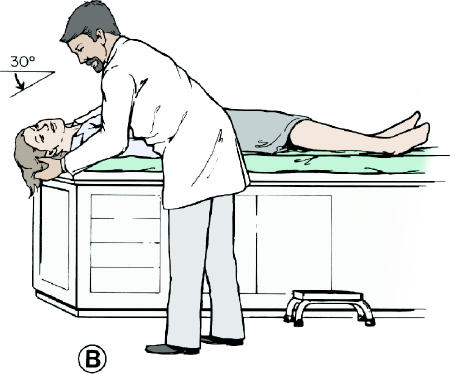
Fig. 6: Dix–Hallpike manoeuvre (right ear). The patient is seated and positioned so that the patient's head will extend over the top edge of the table when supine. The head is turned 45ο toward the ear being tested (position A). The patient is quickly lowered into the supine position with the head extending about 30ο below the horizontal (position B). The patient's head is held in this position and the examiner observes the patient's eyes for nystagmus. In this case with the right side being tested, the physician should expect to see a fast-phase counter-clockwise nystagmus. To complete the manoeuvre, the patient is returned to the seated position (position A) and the eyes are observed for reversal nystagmus, in this case a fast-phase clockwise nystagmus. Photo: Christine Kenney
